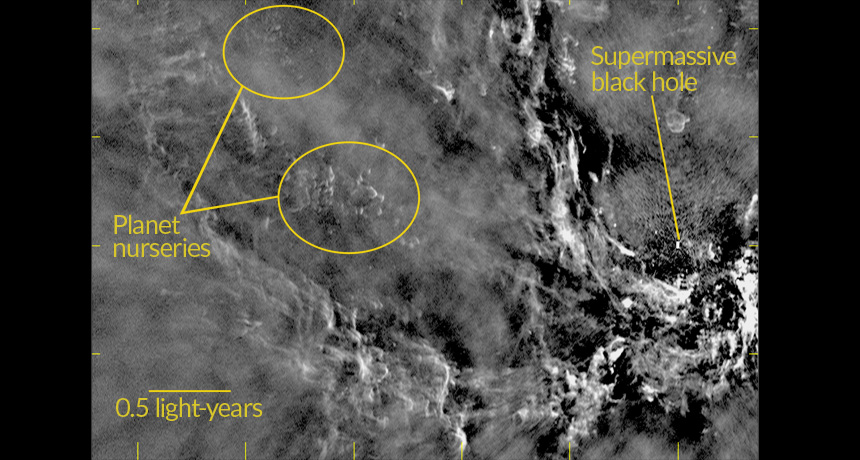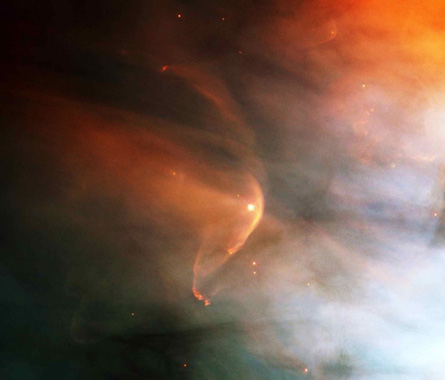
POSSIBLE PLANET NURSERY A turbulent maelstrom of gas, seen in this radio image from the Very Large Array, swirls around the supermassive black hole at the center of the Milky Way. In those swirls, astronomers think they have found budding solar systems.
F. Yusef-Zadeh et al, NRAO, AUI, NSF








